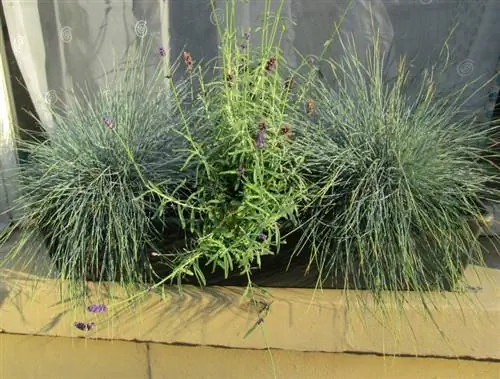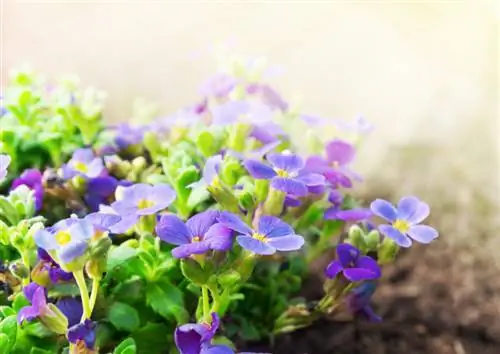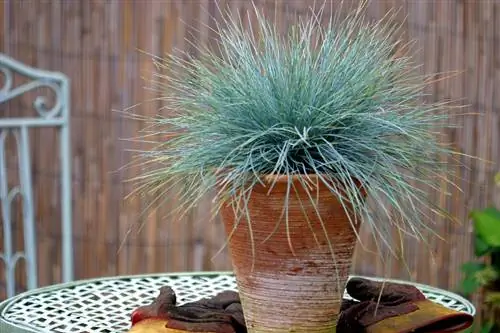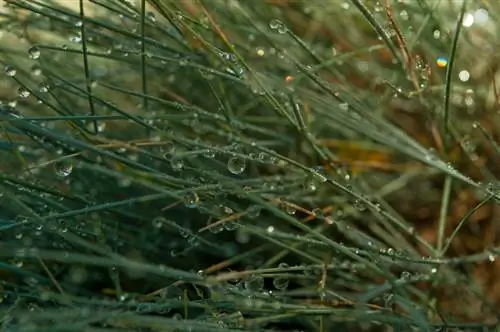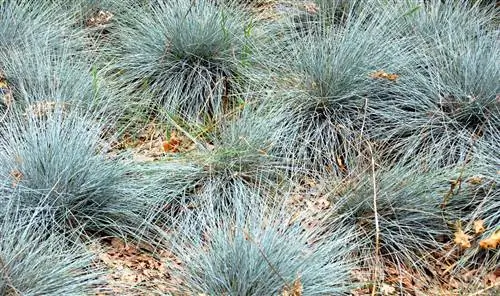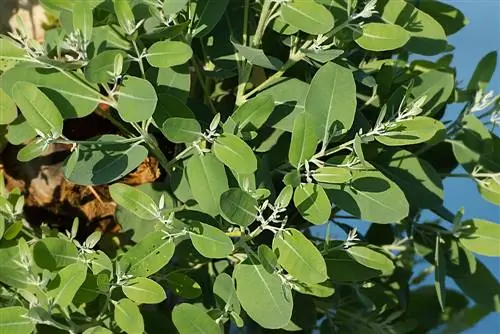- Author admin [email protected].
- Public 2023-12-16 16:46.
- Last modified 2025-01-23 11:20.
Festuca glauca or blue fescue is an ornamental grass with very distinctive, blue to blue-gray stalks and a dense, clumpy growth. The plant is primarily found in barren, mountainous areas in Central and Northern Europe and is therefore used to cold and uncomfortable winters. Blue fescue is also very hardy in the home garden, provided it feels comfortable in its location.
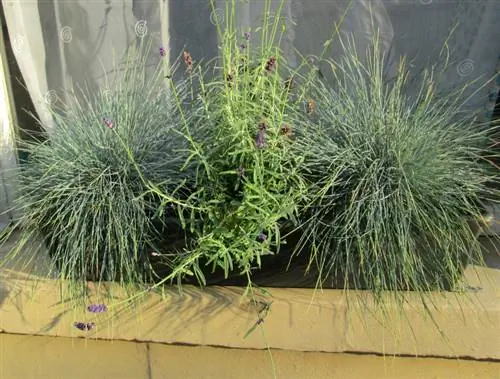
Is blue fescue hardy?
Blue fescue (Festuca glauca) is a hardy ornamental grass that does not require any additional winter protection measures. A suitable, sunny location with permeable, dry soil is important. In the pot, light winter protection should be supplemented with garden fleece.
In winter, additional protection is not necessary
Blue fescue grass is actually a very hardy and extremely robust plant that does not require any protection, even in very cold winters. Nevertheless, many gardeners report that the clumps have frozen back after the cold season and will not sprout again. This is rarely because the blue fescue cannot tolerate the frost; the chosen location is usually the cause of the collapse.
Choosing the right location
Although the blue fescue is quite robust, it can quickly annoy you in an unsuitable location. Ideally, choose a sunny to full sun, dry place with a nutrient-poor, sandy to gravelly substrate. Excessive moisture in particular causes problems for the grass, so that the blades quickly begin to rot. Instead, the blue fescue grass looks wonderful in a heather or rock garden.
Blue fescue in a bucket or balcony box
Provided you ensure good drainage, blue fescue also feels very comfortable in the balcony box and can stay there throughout the winter. The distinctive grasses look particularly pretty in combination with the also winter-hardy bud heather - a great way to conjure up some colorful splashes on the balcony or terrace even in the cold season. However, you should provide blue fescue in the container with light winter protection, as the roots are not adequately protected from frost due to the small amount of substrate. To do this, you can, for example, wrap gardening fleece around the planter.
Caution: Do not cut back blue fescue in fall
To keep the blue fescue grass he althy over the winter, you must not cut it back in the fall. This weakens the plant so that pathogens (especially fungi) have an easy time of it. In general, it is not recommended to cut back the ornamental grass. Only yellow or withered stalks should be plucked out.
Tip
If you want to be on the safe side, you can cover the clumps in winter with a layer of leaves or pine branches.

